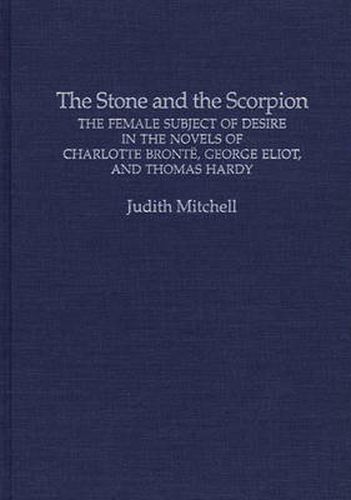Readings Newsletter
Become a Readings Member to make your shopping experience even easier.
Sign in or sign up for free!
You’re not far away from qualifying for FREE standard shipping within Australia
You’ve qualified for FREE standard shipping within Australia
The cart is loading…






Sexuality and erotic desire were important components of Victorian culture, and the novels of the Victorian era reflect the sexual attitudes of the authors and culture of that period. The Stone and the Scorpion focuses on the interplay of erotics in the novels of Charlotte Bronte, George Eliot and Thomas Hardy. Using several extra-literary critical approaches, particularly psychoanalytic object-relations theory, this book determines degrees of female subjectivity and desire in these novels. At the heart of the study is the belief that the disruption of conventional male-female dualities is essential to the recasting of the erotic relationship in contemporary culture. Mitchell re-reads several well-read novels by three major Victorian authors in order to analyse their symbolic construction of gender and sexuality. As a group, the novels she discusses are a recognised part of the established literary canon; they span the 19th century; and they embody various forms of erotic desire. The book considers to what extent the novelists dare to invest their female characters with erotic subjectivity, and to what degree this investment changed over time.
$9.00 standard shipping within Australia
FREE standard shipping within Australia for orders over $100.00
Express & International shipping calculated at checkout
Sexuality and erotic desire were important components of Victorian culture, and the novels of the Victorian era reflect the sexual attitudes of the authors and culture of that period. The Stone and the Scorpion focuses on the interplay of erotics in the novels of Charlotte Bronte, George Eliot and Thomas Hardy. Using several extra-literary critical approaches, particularly psychoanalytic object-relations theory, this book determines degrees of female subjectivity and desire in these novels. At the heart of the study is the belief that the disruption of conventional male-female dualities is essential to the recasting of the erotic relationship in contemporary culture. Mitchell re-reads several well-read novels by three major Victorian authors in order to analyse their symbolic construction of gender and sexuality. As a group, the novels she discusses are a recognised part of the established literary canon; they span the 19th century; and they embody various forms of erotic desire. The book considers to what extent the novelists dare to invest their female characters with erotic subjectivity, and to what degree this investment changed over time.